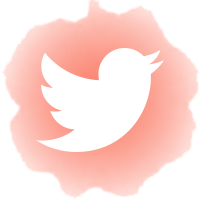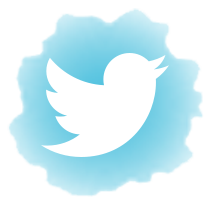“The choice is simple: during this global season of fear and uncertainty, you can waste your time or put it to good use. You can check the news every hour and catch up on those two thousand shows you haven’t seen. Alternatively, you can stop worrying about what you can’t control, and use the available time to the best of your ability. I know which choice is better for me—do you?”
– Author Chris Guillebeau on the second best thing you can do during a pandemic (after washing your hands, of course).

Wellness Tip:
Celebrate Wins (No Matter How Small)
It’s easy to get stuck focusing on the negatives in life (in fact, we all do it – it’s called the negativity bias, and it’s real). But wait for the good news: It is possible to re-train our brains to be more positive – in turn giving our wellbeing a boost.
One way to do this is by celebrating our wins. When we do this, we feel a sense of achievement – which inspires us to want to progress more. This creates a positive cycle.
And guess what? Minor victories are as important as major breakthroughs – so celebrate them all!
Maybe you got in 10,000 steps today, cooked a pretty decent lasagna, or even just leveled-up your remote work situation by actually putting on some pants… Whatever it is, acknowledge it and give yourself props for making it happen.
The End of Day Review in your Panda Planner includes the “Today’s Wins” section for precisely this reason. Try using it tonight to list down three things you won at today – no matter how big or small they may be!
Productivity Tip:
Reconsider The Meaning of Remote Work
We’re all about remote work at the moment (for obvious reasons). And the truth is, it can be quite a huge adjustment to make.
For those of us struggling to stay productive at home, here’s a useful tip: give some thought to what it means to work remotely. Why? Because often our problems stem from the fact that we’ve put unnecessary or unworkable boundaries around our definition of remote work.
Here’s an interesting interview with Basecamp CEO Jason Fried (bearing in mind that Basecamp has been a fully remote company for over 20 years now).
“Where people go wrong is when they try to simulate working in an office, but just remotely: same number of meetings, same number of people in meetings, just via videoconferencing,” says Fried. “That’s not taking advantage of the potential benefit of remote work: asynchronous work, meaning that you don’t have to do everything in real time anymore. You can give people more time back during the day – long stretches of uninterrupted time where they can do more creative work.”
According to Fried, we need to trust employees to get work done on their own time. And above all, be compassionate to ourselves and each other. “We have to curb our ambitions right now, and be empathetic about the situation we’re in.”
So if you’ve been thrown into the deep end of remote work, know that you’re not alone. Think about how you can break out of the bounds of the traditional workplace and make the situation work best for you.
Here are a few ideas to get you started:
- Be flexible with your hours (if your work allows it). Perhaps you prefer to start work earlier so you can finish earlier and get more of your day free.
- Minimize interruptions by setting ground rules with housemates/family members.
- Let go of the idea that you need to appear busy all the time and focus on getting the work done in your own way.
- Let your colleagues know when you’re in focused or “deep work” mode so they understand if you don’t respond right away.
If ambient noise makes it hard to focus, try wearing noise-canceling headphones or listening to binaural beats.
Routine Breakdown
Terri Schneider, Endurance Athlete, Speaker & Writer

“There is enormous power in nailing your morning routine, but there’s even more power in adapting to it when it doesn’t happen as we’d like,” says Terri Schneider (very wisely, we might add). Here’s her morning routine:
- She sets her intention for the day before getting out of bed. “This is a word or phrase that will guide how I move through my day. It’s usually something like “compassion,” “joy,” “gratitude,” “mindfulness,” or whatever I choose as a guiding force.”
- Puts on workout gear, which she’s left out next to the bed.
- Does her workout, which may be running, biking, swimming, lifting weights, yoga, or a combination of these.
- Uses her morning workout to check in with her mind, notice her thoughts, and set herself up for the coming day.
Why it works:
- Setting intentions helps us stick to our goals. (Schneider nails it with her phrase, “a guiding force” – even a simple one-word intention can keep bringing us back to what matters most for the day.)
- Prepping your workout gear the night before makes the decision to exercise much easier. In fact, it helps to create what psychologists call an “instigation habit” – the clothing acts as a cue that triggers the exercise habit so you no longer have to think about it.
- We all know physical activity is good. Research suggests there are benefits to doing it in the morning – like this 2019 study which found that morning exercise improves decision-making, attention, and visual learning.
- Using her workout to check in with her thoughts promotes mindfulness and allows her to re-establish the intention she set for the day.
How about setting your own daily intention tomorrow? Thinking about it is a start, but it’s even better if you write it down – you can use the “focus” section of your daily planner for this. Writing down our intentions helps us to encode them in our brains, meaning we’ll be more likely to keep them in mind as we go about our day.












